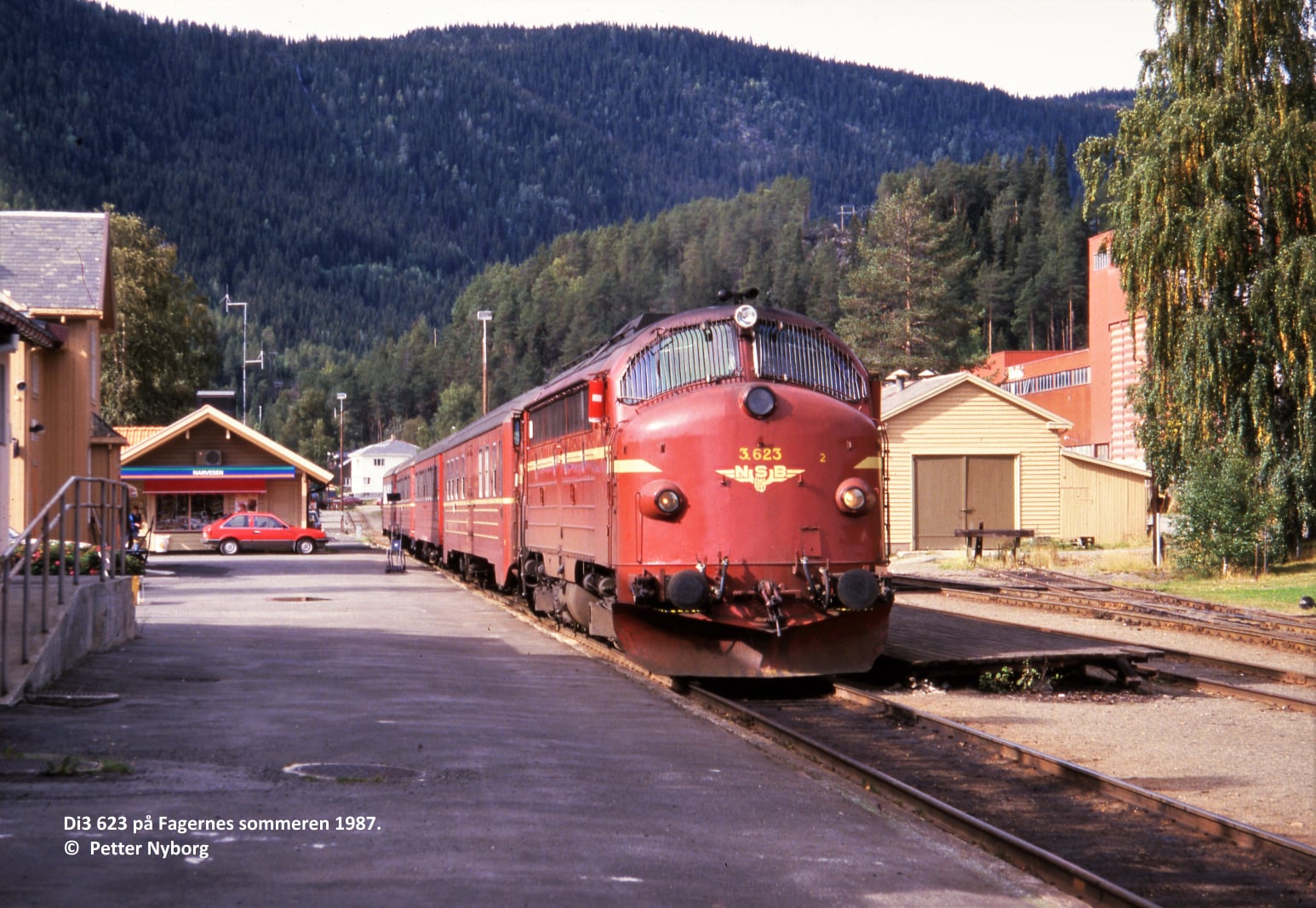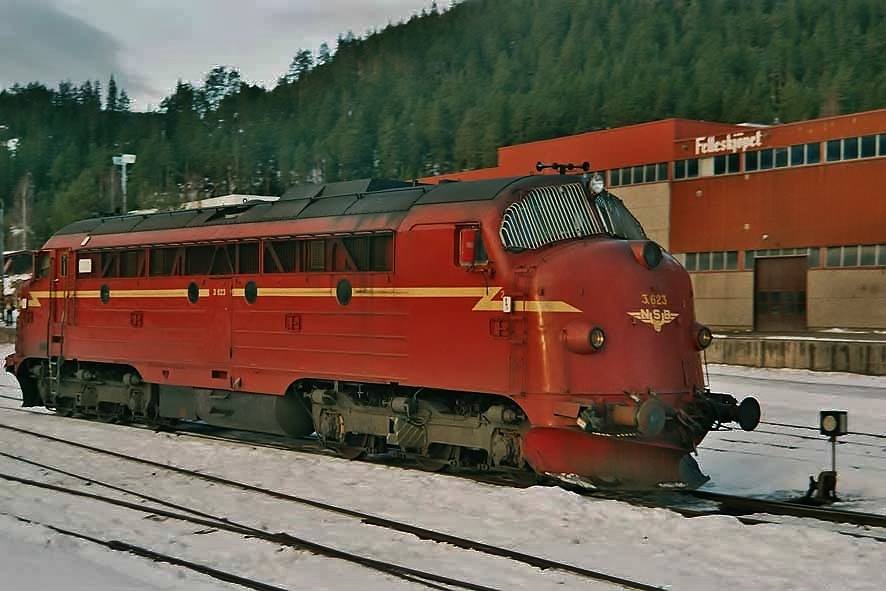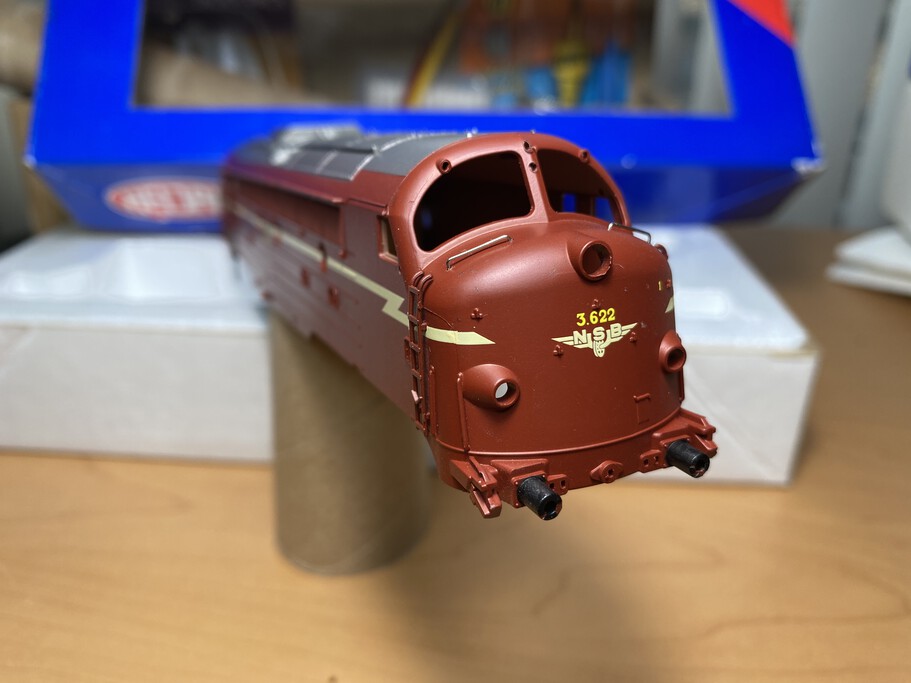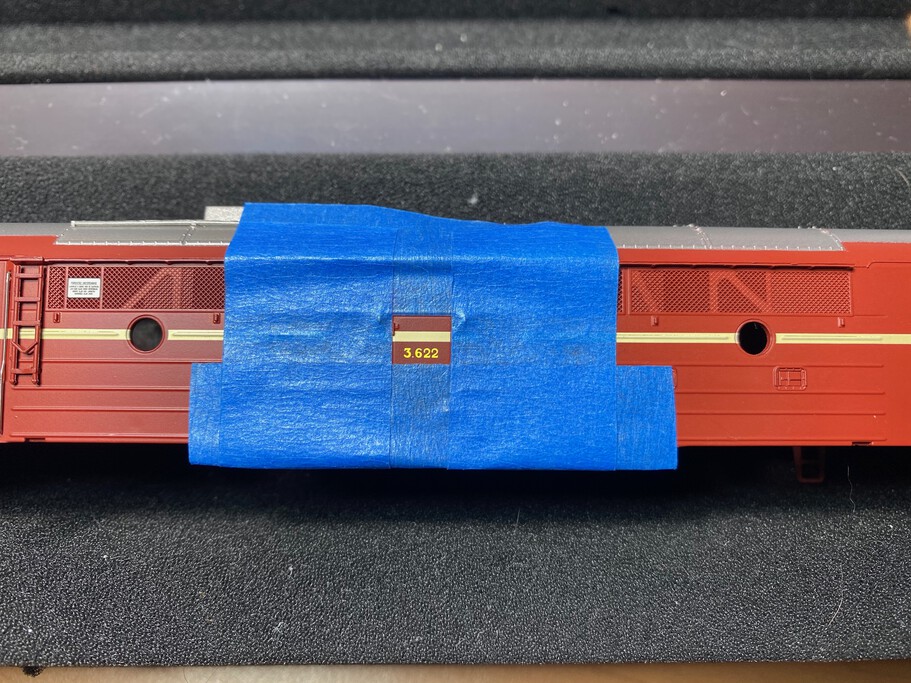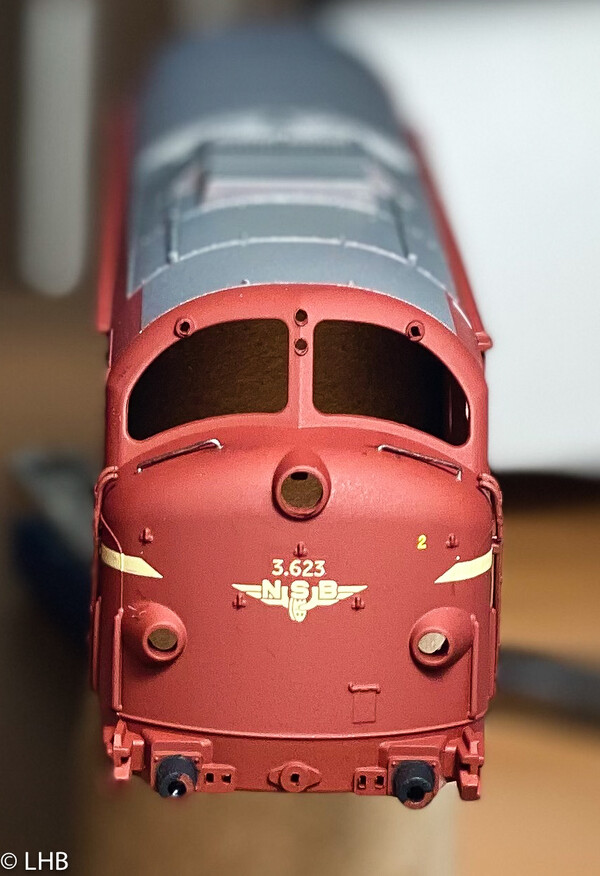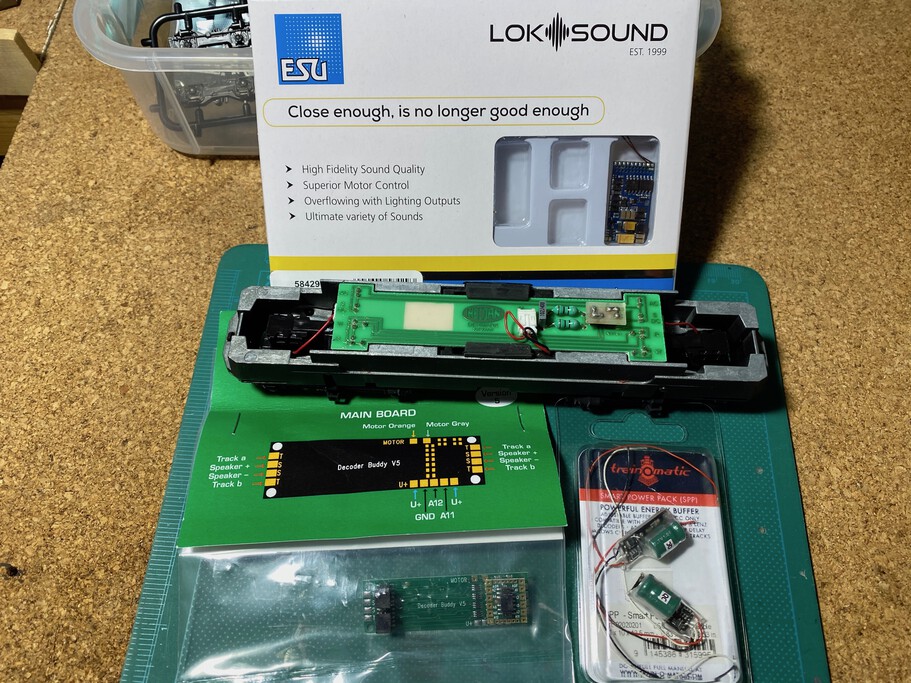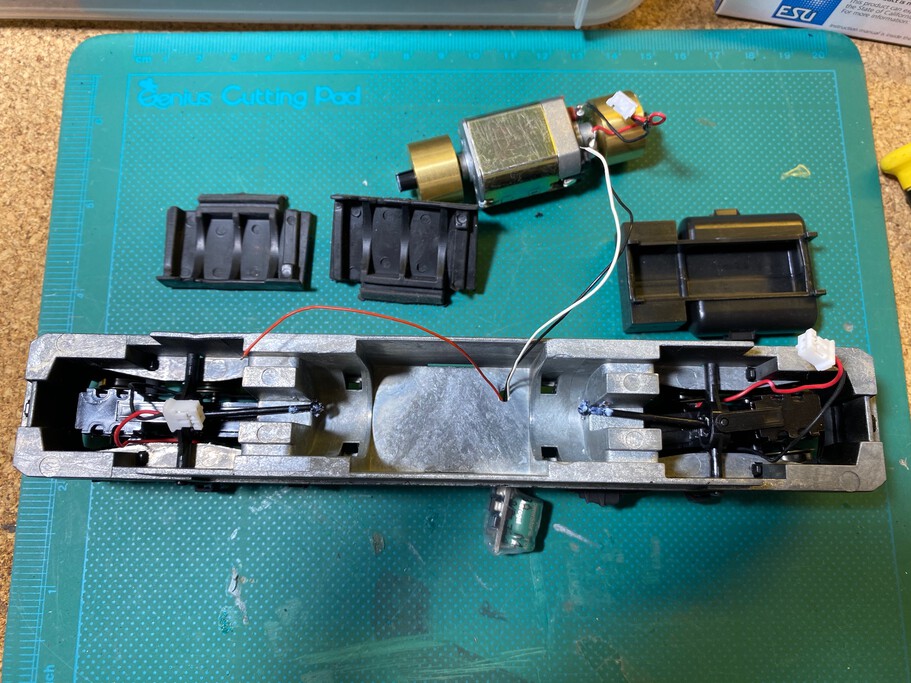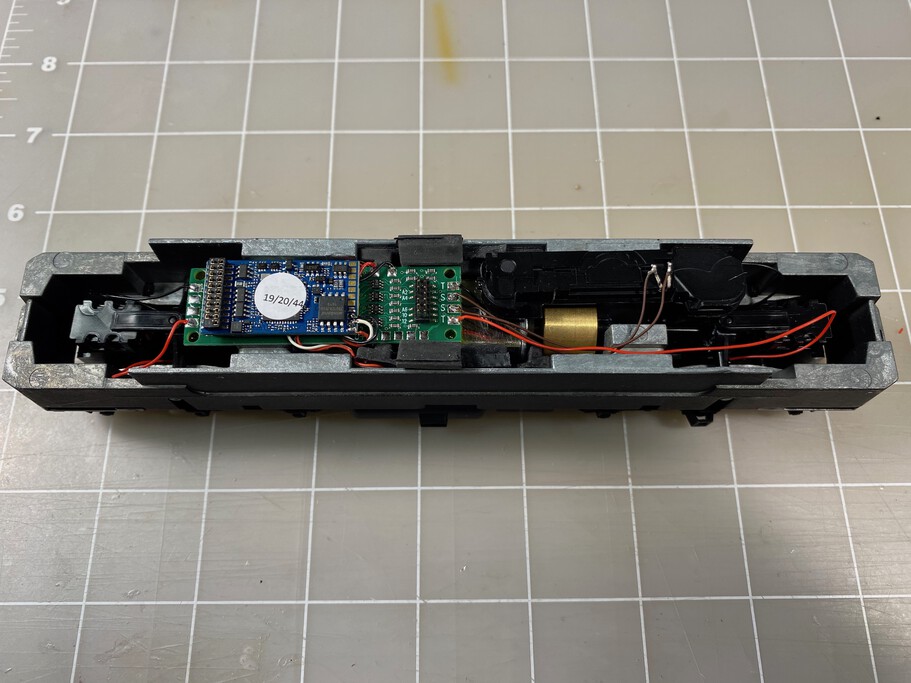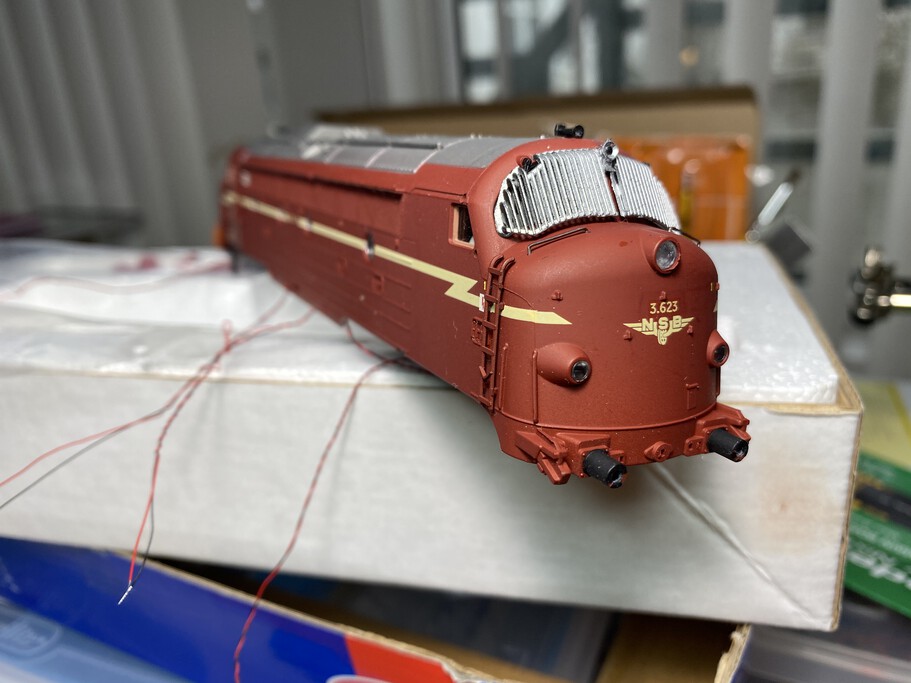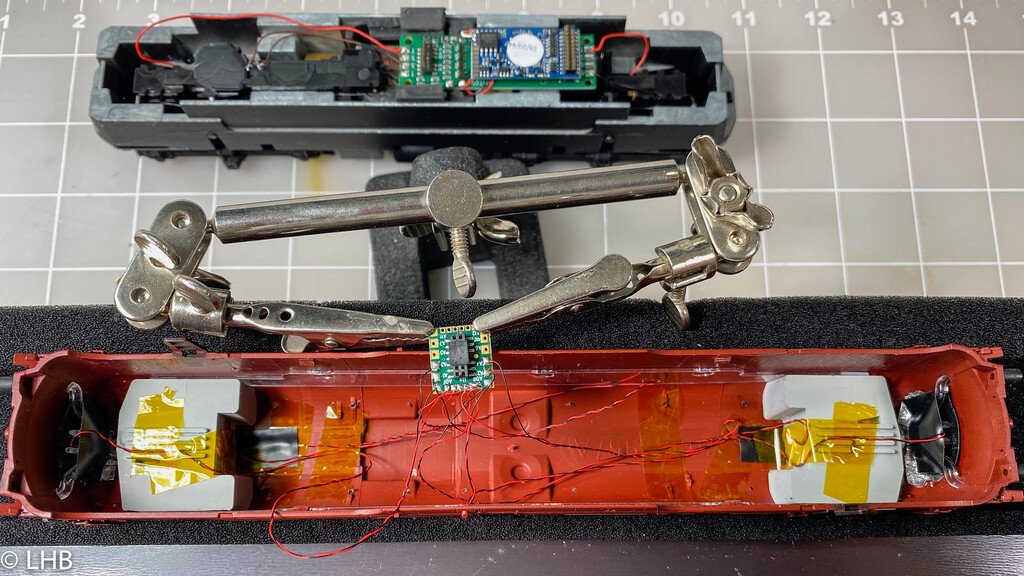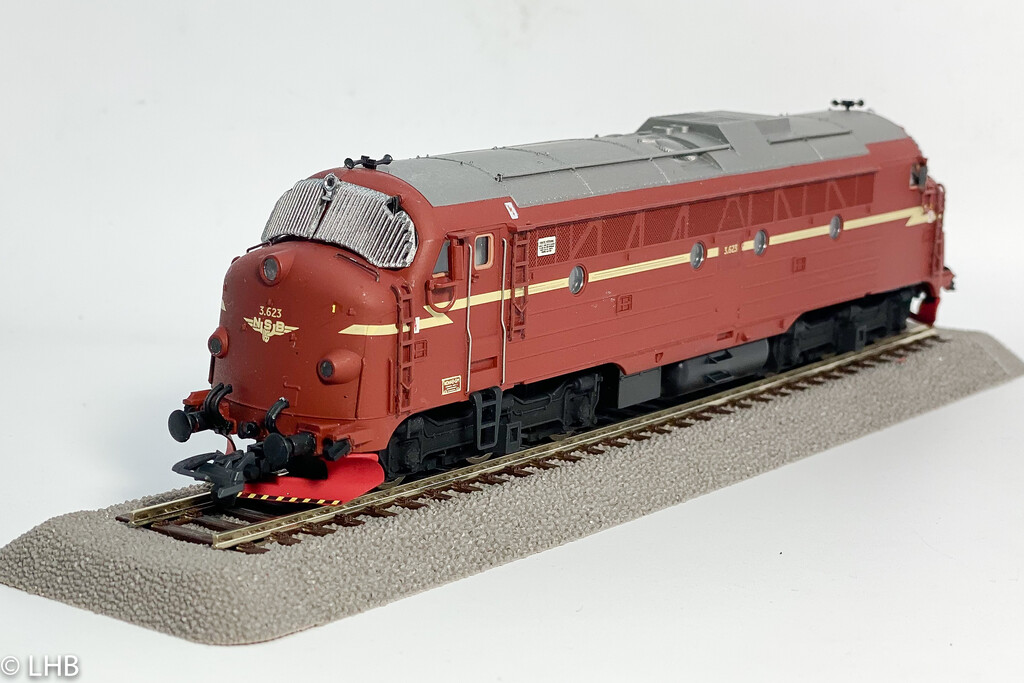Introduction
During the 1980s the Di3.623 still had the old colors (gammel design), as this is one of my favorite eras I wanted a model of this particular model. There has been no production model of the 623 in these colors though.
A good starting point is the Heljan model as the 623 is a long Di3 (the 602, 622, 623 and 641-643 were longer than the other models). I was able to get a shell of the Heljan Di3.622 in the gammel design color. This model was made by Heljan on behalf of NMJ in the early 2000's.
This page will describe making a model of the Di3.623 from this 622 shell.
Renumber
DCC Sound install
The original PCB is not going to be used, a Nixtrainz decoder buddy is used instead. This board is much smaller than the original PCB. This board has a small connector for all the light connections. Finally an iPhone 4S speaker is installed.
6 LEDs are used for lights. The top-light uses a lens from Scale Sound Systems. Cab lights are made by glueing a small LED to the back of the interior cab insert. Then all the wires are hooked up to the decoder buddy connector. This allows for removing the shell in the future. All the various outputs are clearly marked on the connector board which makes for an easy hookup.
